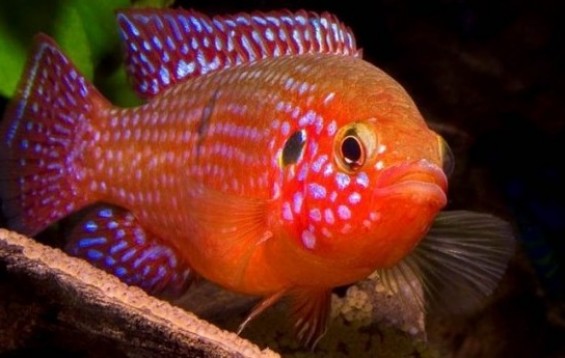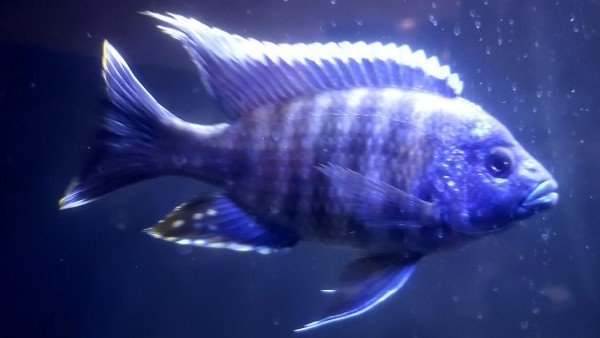- Name:
Jewel Cichlid
(View AKA's) - Family: Cichlidae
- Species: African Cichlids
- Scientific Name: Hemichromis bimaculatus


More Details
General info about Jewel Cichlid
The Jewel Cichlid is a popular freshwater fish among aquarium hobbyists. It is known for its bright colors and aggressive behavior, which can make it a challenging fish to keep. The Jewel Cichlid is native to West Africa and can be found in rivers, streams, and lakes.
The Jewel Cichlid has a distinctive appearance with bright, metallic scales that reflect light. The body is oval-shaped and can grow up to 6 inches in length. The coloration of the Jewel Cichlid varies, but it typically has a bright red or orange body with blue-green metallic markings. The dorsal fin has sharp spines that can be extended when the fish feels threatened.
The Jewel Cichlid requires a minimum tank size of 30 gallons, with a larger tank being recommended for multiple fish. The aquarium should be decorated with hiding places such as rocks, caves, and driftwood. The substrate should be fine sand or smooth gravel. The water temperature should be maintained between 75°F and 80°F, with a pH level of 7.0 to 8.0.
Jewel Cichlid Diet & Nutrition
The Jewel Cichlid is an omnivorous fish and will eat a variety of foods. In the wild, their diet consists of small insects, crustaceans, and algae. In the aquarium, they can be fed a diet of high-quality pellets, flakes, and frozen or live foods such as brine shrimp or bloodworms. It is important not to overfeed the Jewel Cichlid as they can easily become obese.
Determining Sex of Jewel Cichlid
The male Jewel Cichlid is typically larger and has more intense coloration than the female. During breeding, the male will display a brighter coloration and will become more aggressive.
Breeding & Spawning Jewel Cichlid
The Jewel Cichlid is a substrate spawner and will lay their eggs on a flat surface such as a rock or the aquarium substrate. The breeding pair will become very territorial and aggressive during spawning, so it is important to have a large enough tank with plenty of hiding places. The eggs will hatch in approximately 2 to 3 days, and the fry will become free-swimming after a week. The parents will protect the fry and may move them to a different location in the aquarium.
Caution with Jewel Cichlid
The Jewel Cichlid is an aggressive fish that should be kept with other fish of similar size and temperament. They can become territorial, especially during breeding, and may become aggressive towards other fish. It is best to keep them in a species-only tank or with other aggressive fish that can hold their own. The Jewel Cichlid is also a digger and may rearrange the substrate in the aquarium.
Relevent Articles
Original Detail
| Name | Species | Family | Scientific Name | More Detail | Added by |
|---|---|---|---|---|---|
| Jewel Cichlid | African Cichlids | Cichlidae | Hemichromis bimaculatus | The Jewel Cichlid is a popular freshwater fish among aquarium hobbyists. It is known for its bright colors and aggressive behavior, which can make it a challenging fish to keep. The Jewel Cichlid is native to West Africa and can be found in rivers, streams, and lakes. The Jewel Cichlid has a distinctive appearance with bright, metallic scales that reflect light. The body is oval-shaped and can grow up to 6 inches in length. The coloration of the Jewel Cichlid varies, but it typically has a bright red or orange body with blue-green metallic markings. The dorsal fin has sharp spines that can be extended when the fish feels threatened. The Jewel Cichlid requires a minimum tank size of 30 gallons, with a larger tank being recommended for multiple fish. The aquarium should be decorated with hiding places such as rocks, caves, and driftwood. The substrate should be fine sand or smooth gravel. The water temperature should be maintained between 75°F and 80°F, with a pH level of 7.0 to 8.0. | PalaciosAn |
Changed by users
| Submitted Date | Submitted By | Status | Action |
|---|






